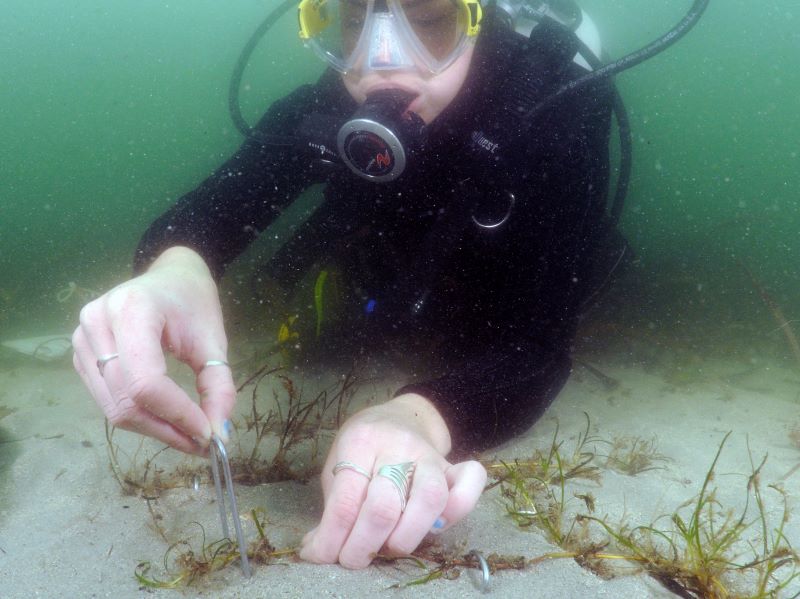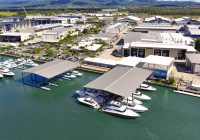The condition of underwater seagrass meadows of Botany Bay is improving, thanks to a restoration and monitoring project that’s been quietly unfolding over the past decade.

Securing fragments of Zostera seagrass, image courtesy of Justin Gilligan
Scientists have been working to revive Posidonia australis, a slow growing seagrass that plays a vital role in keeping our oceans healthy, supporting marine life, storing carbon and preventing erosion.
After electricity cable installation damaged the seafloor, scientists planted thousands of seagrass shoots and tracked their progress.
Over 2.5 years, they trialled several techniques, including transplanting mature fragments of fast-growing Zostera muelleri, slower-growing Posidonia, and growing Posidonia from seed.
“Roughly 3,600 Posidonia shoots were planted under protective jute mesh panels,” said Dr Tim Glasby, Principal Research Scientist at the Department of Primary Industries and Regional Development.
“Zostera transplants boosted coverage early on but were overtaken by natural recolonisation within two years.”
The results are promising. More than 70 percent of the damaged area has recovered, although the seagrass remains thinner than before and deeper zones continue to struggle with low light.
However, new damage from boat moorings during the monitoring period outpaced restoration gains.
“The findings send a clear message,” said Dr Glasby.
“Restoration can work, but long-term success depends on preventing further harm.”
Published in Restoration Ecology, the research offers valuable insights for seagrass conservation in urban estuaries worldwide.
It forms part of the Marine Estate Management Strategy’s, Estuarine habitat monitoring and threat assessment project.








